Art can provide an important connection to our cultural heritage, and Indian art is simply rich in traditions that date back hundreds and thousands of years. One of the most popular traditional art forms is Madhubani painting.
What is Madhubani art?
Madhubani art — also known as Mithila art — is a traditional Indian art form noted for its use of local plants for colors, cow dung to treat the paper and bamboo sticks that serve as brushes, not to mention the beauty and simplicity of the paintings themselves.
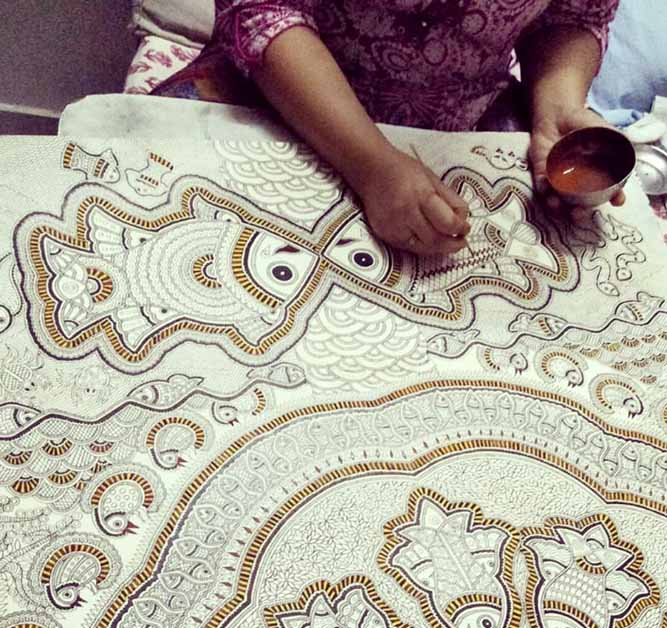
Are Madhubani and Mithila the same?
Yes, these are two names for the same art form — Madhubani painting is also known as Mithila because it originated from the Mithila region in Bihar, India.
When did Madhubani art originate?
While its exact origin is unknown, legend holds that King Janak, the ruler of the Mithila region in the 8th or 7th century BCE, requested this new form of painting to capture his daughter Sita’s wedding to Prince Rama, the central figure of the epic Ramayana.
We do know that, centuries ago, women first made Madhubani paintings on the freshly plastered walls and floors of mud huts. This technique was then passed down for generations, and today Madhubani paintings are also made on cloth, handmade paper and canvas. Although both men and women now paint in this style, Madhubani stands out as an art form historically developed and dominated by women.
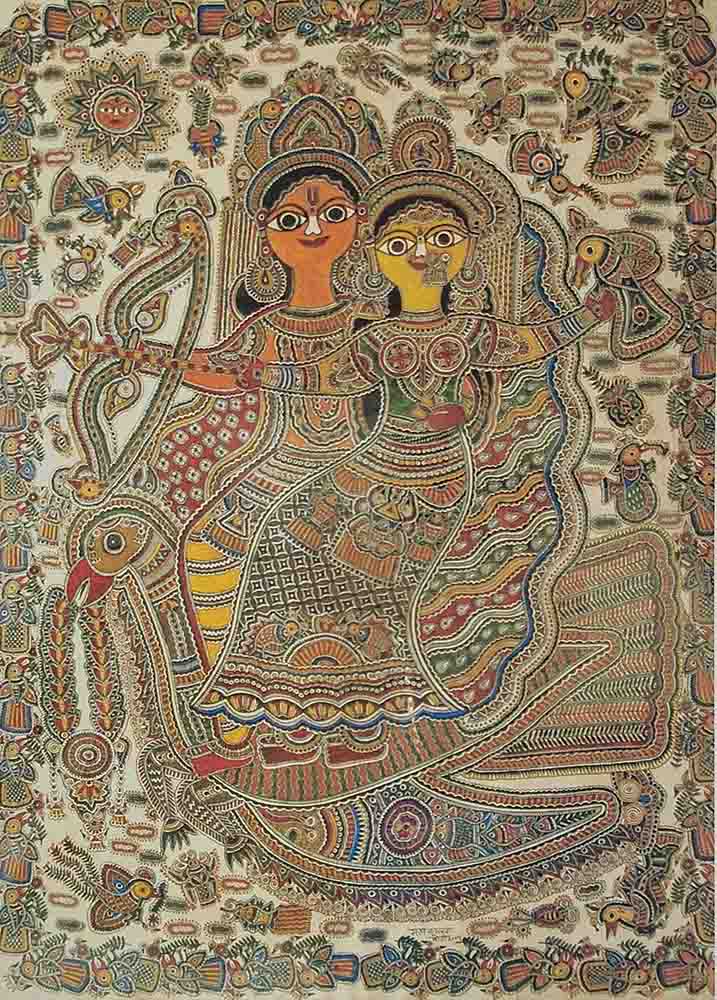
What are the 3 themes in Madhubani painting?
There are three main themes in Madhubani art: religion, social scenes and elements of nature.
- ReligionHindu mythological figures and scenes from sacred texts are very common subjects, featuring popular deities like Radha and Krishna, Shiva, Ganesha, Saraswati and Laxmi.
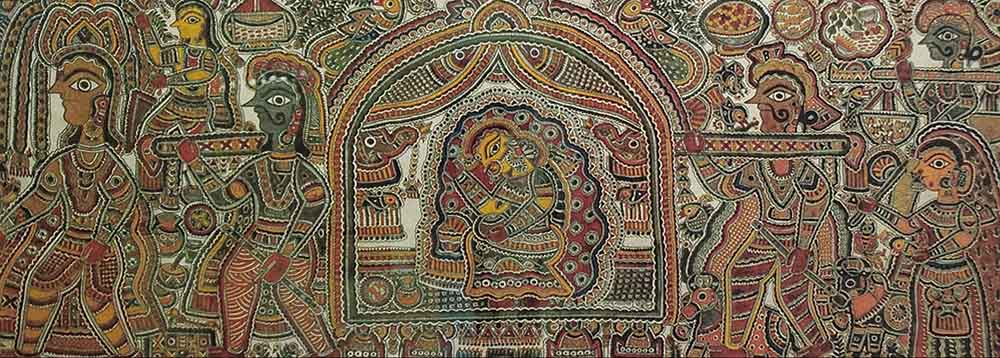
- SocialFrom harvests and markets to the royal court and children playing, Madhubani paintings beautifully render scenes from daily rural Indian life. Wedding ceremonies are especially sought-after, with messages of love and fertility.
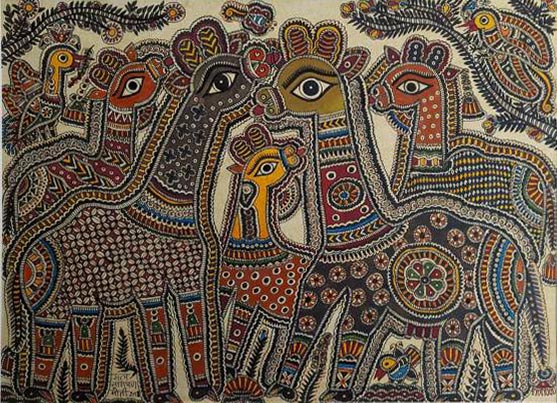
- NatureThe beauty and abundance of nature is an essential value of Madhubani paintings. Some of the most beloved images are the sun, the moon, birds and animals, the sacred Tulsi plant and Banyan trees.
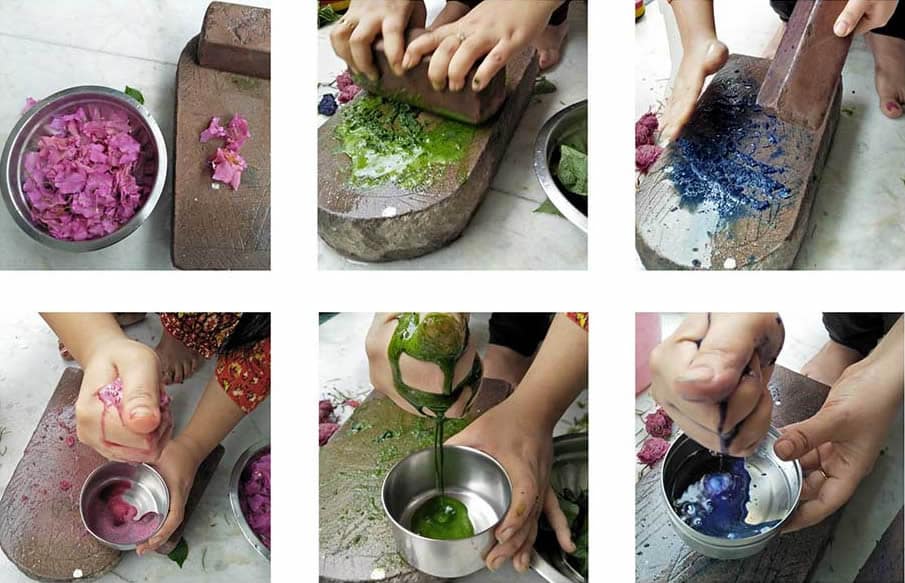
What materials are used for Madhubani art?
Madhubani artists prepare their own paints and tools from natural, locally available materials. Before applying any paints, the paper is treated with cow dung to preserve the strong color of the natural pigments. Cow dung is also mixed with charcoal and water for drawing the black outline.

Which pen is used for Madhubani?
Artists use a bamboo stick for the intricate black outline of the painting, which cannot be erased or changed once it is begun.
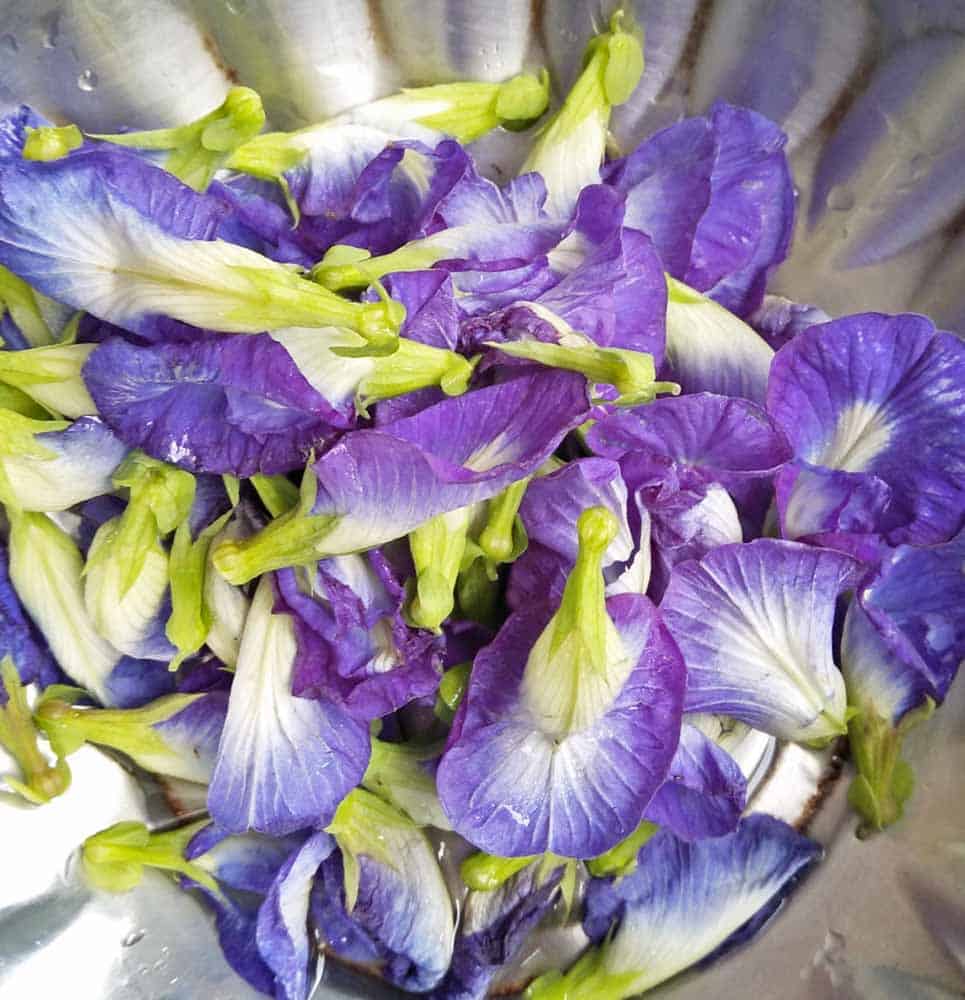
What colors are used in Mithila?
Madhubani artists create their natural pigments from flowers and vegetables. Some common ingredients include the aparajita flower for blue, bougainvillea for pink, flat bean leaves for green, turmeric for yellow and rice powder for white.
Where is Madhubani practiced today?
Unfortunately, few Madhubani artists are living and working today. As the world modernizes, it becomes increasingly difficult for traditional artisans to make a living from their craft alone, and many ancient forms of Indian art are consequently at risk of disappearing altogether.
Indian folk artists need support from collectors around the world in order to preserve their art, and that’s exactly why traditional Indian art is an important aspect of Laasya Art’s collection. We hope to encourage a new generation of appreciation for Madhubani paintings.
To browse our curated collection of Madhubani (Mithila) paintings online, visit https://laasyaart.com/mithila-art. Please reach out to us at info@laasyaart.com or +1 650-770-9088 to view these traditional artworks in person at our gallery in Palo Alto (San Francisco Bay Area).










0 Comments